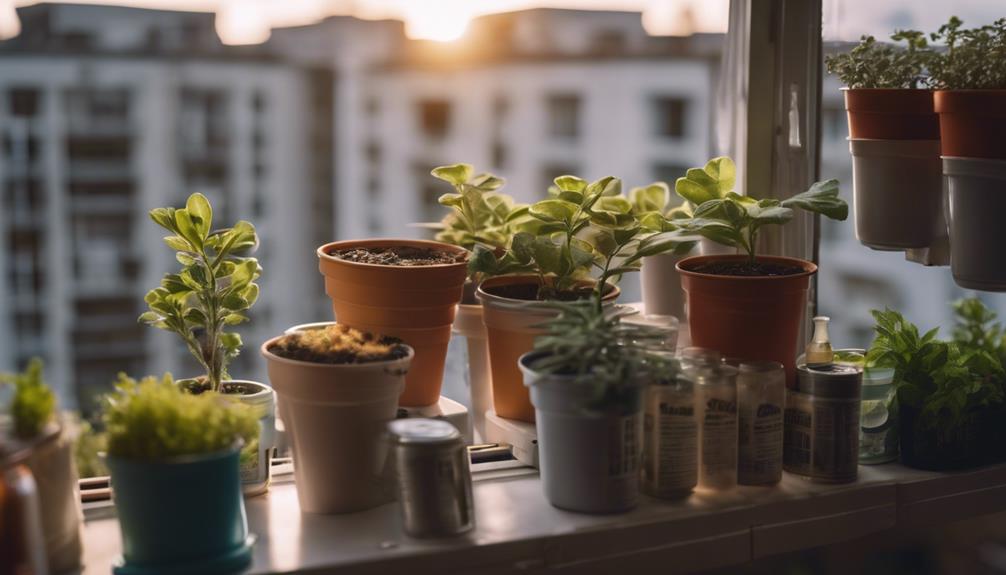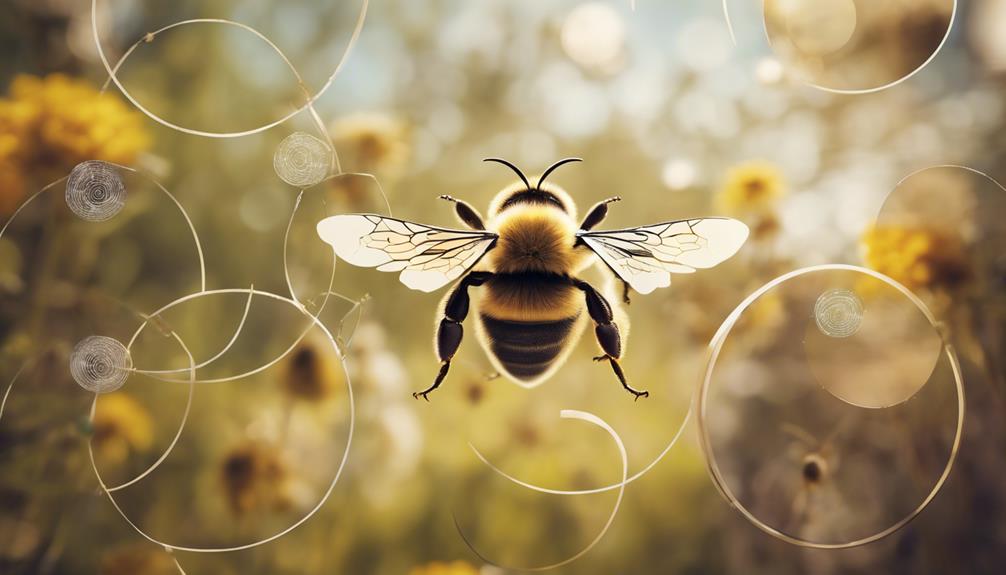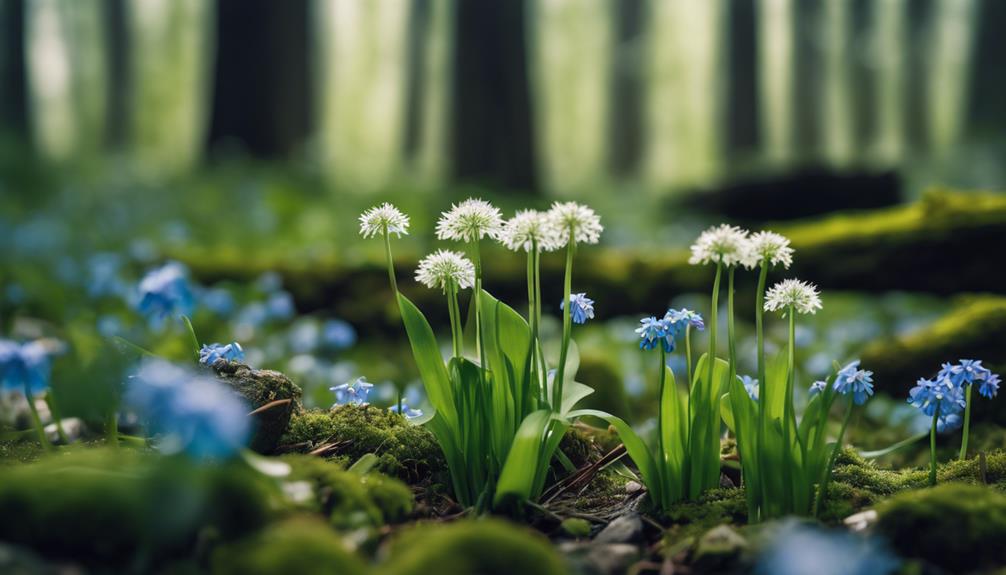You can forage in many city parks without a permit, as long as you follow local laws and regulations that govern urban foraging. Before heading out, verify local rules and respect private property rights. Familiarize yourself with common urban weeds like dandelions, purslane, and chickweed, which are rich in nutrients. City parks offer a diverse range of edible plants, nuts, fruits, and flowers. Now that you've got a taste of what's out there, explore further to discover the best foraging spots, safety tips, and responsible practices to make the most of urban foraging.
Key Takeaways
- Foraging in city parks is generally allowed on public land without a permit, but verify local laws and regulations beforehand.
- FallingFruit.org offers maps to identify suitable foraging locations and help you get started.
- Respect private property rights by seeking permission before foraging on private land and avoid protected areas within parks.
- Identify plants correctly to ensure safety, and harvest responsibly to maintain the park's ecosystem and respect other visitors.
- Join community foraging groups, local mycological societies, or online resources to learn responsible foraging practices and stay updated on local regulations.
Understanding Urban Foraging Laws
Before starting to forage in city parks, it's important to grasp the local laws and regulations governing this activity. You can't just initiate foraging anywhere, anytime.
Understanding urban foraging laws is vital to avoid any legal issues or conflicts with private property owners. Generally, foraging in city parks is allowed on public land without a permit. You can explore sidewalks, parks, and riverbanks, which are common foraging spots in urban areas.
Websites like FallingFruit.org offer maps to help you identify suitable foraging locations. However, it's crucial to verify local laws and regulations before heading out. Some areas might've specific rules or restrictions, so it's better to be safe than sorry.
Remember to respect private property rights by seeking permission before foraging on someone's land. Don't assume it's okay to forage anywhere; take the time to understand the regulations in your area.
Identifying Edible City Plants

As you explore city parks, you'll encounter a variety of edible plants hiding in plain sight.
You'll discover common urban weeds, like dandelions and plantain, as well as city trees with edible goodies, such as fruit or nuts.
Now, let's take a closer look at these points and uncover the parks' hidden edible gems.
Common Urban Weeds
Explore the world of urban foraging by learning to identify the common weeds that grow in city parks, many of which aren't only edible but also packed with nutrients. These plants are often abundant and accessible, making them a great starting point for your foraging journey.
Some of the most common urban weeds include:
- Dandelions: rich in vitamins A, C, and K, and minerals like potassium and iron
- Purslane: high in omega-3 fatty acids and antioxidants
- Chickweed: a good source of vitamins A, C, and D, as well as minerals like calcium and potassium
City Trees With Edibles
You'll often find that city trees, such as mulberry, crabapple, and cherry, bear edible fruits that are ripe for the picking in urban environments. These city trees offer a sweet surprise for urban foragers, providing a fresh and sustainable source of nutrition.
But that's not all – city parks are also home to a variety of edible plants, including dandelions, purslane, and chickweed. These common weeds are packed with nutrients and can add a burst of flavor to your meals.
If you're looking for something a little more substantial, you can harvest acorns from oak trees or forage for wild herbs like plantain, wild garlic, and lambsquarters. City parks offer a diverse range of edible plants, nuts, fruits, and flowers that can be foraged sustainably and ethically.
With a little knowledge and practice, you can enjoy the bounty of the urban wild and add some excitement to your meals. So, get out there and start foraging – your taste buds (and the environment) will thank you!
Parks' Hidden Edible Gems
While wandering through city parks, you're likely to stumble upon a multitude of edible gems hidden among the grass and gardens. These urban parks are treasure troves of wild edibles, waiting to be discovered and added to your culinary creations.
When foraging in city parks, keep an eye out for:
- Dandelions, chickweed, and violets, which can be used in salads or as cooking greens
- Purslane, lambsquarters, and plantain, which add flavor and nutrition to various dishes
- Elderflowers, rose petals, and nasturtiums, which make lovely edible flowers for cooking or teas
- Mulberries, crabapples, and serviceberries, which provide fresh, forageable produce
As you explore these green spaces, remember to always identify plants correctly and harvest responsibly to safeguard the continued health of these hidden gems. Happy foraging!
Urban Foraging Safety Precautions

As you venture into urban foraging, it's vital to take necessary precautions to guarantee your safety.
You'll want to know the law, understanding what's allowed and what's not in your city's parks, and be able to identify poisonous lookalikes that can be mistaken for edible plants.
Know the Law
When venturing into city parks to forage for wild edibles, it's important that you familiarize yourself with local laws and regulations to avoid legal repercussions and guarantee a safe, enjoyable experience.
Urban foraging in city parks can be a wonderful way to connect with nature, but it's essential to respect the environment and the law.
Before you start foraging, make sure to:
- Verify local laws and regulations regarding foraging in city parks
- Identify suitable foraging locations within city parks and urban areas using resources like FallingFruit.org
- Obtain necessary permissions before foraging on private property within city parks
- Familiarize yourself with legal guidelines to ensure compliance and respect for the environment.
Identify Poisonous Lookalikes
You need to be aware that some of the wild edibles you're searching for have poisonous doppelgangers that can be easily mistaken for the real deal. When it comes to urban foraging, being able to distinguish between toxic and edible plants is important for your safety. In areas with high plant diversity, it's vital to practice caution and educate yourself on poisonous lookalikes.
Here are some examples of poisonous lookalikes to watch out for:
| Edible Plant | Poisonous Lookalike |
|---|---|
| Morel Mushrooms | False Morels |
| Wild Garlic | Deadly Nightshade |
| Wild Parsnip | Water Hemlock |
| Dandelion Greens | Toxic Mimic Plants |
| Wild Onions | Death Camas |
Finding Foraging Hotspots in Cities

In city parks, foragers often stumble upon hidden gems, where diverse plant life and accessibility converge to create ideal foraging hotspots. As you explore urban environments, you'll find that public parks offer a surprising abundance of edible plants, nuts, and mushrooms. Many of these parks have regulations that allow foraging, making them ideal locations for gathering wild foods.
When searching for foraging hotspots in cities, keep an eye out for:
- Parks with diverse plant life, such as those with wooded areas, meadows, or near water sources
- Areas with abundant sunlight, which can indicate a higher likelihood of finding edible plants
- Parks with minimal human traffic, reducing the risk of contamination and increasing the chances of finding untouched wild foods
- Areas with nearby water sources, which can attract a wider variety of plant and animal life
Responsible Foraging Practices

As you explore city parks for wild edibles, it's equally important to prioritize responsible foraging practices to guarantee the long-term sustainability of these urban foraging hotspots.
You should practice ethical foraging by taking only what you need and leaving enough for wildlife and other foragers. Be mindful of park regulations and avoid foraging in protected or restricted areas, as these are often designated to preserve fragile ecosystems.
When foraging, avoid damaging plants or their habitats, and follow Leave No Trace principles by minimizing your impact and leaving the area as you found it.
Consider joining community foraging groups or workshops to learn more about responsible foraging practices and connect with like-minded individuals. By adopting these responsible practices, you'll help secure that city parks remain a viable source of wild edibles for years to come.
Health Benefits of Urban Foraging

By incorporating urban foraging into your lifestyle, you'll not only enjoy a more diverse and nutritious diet but also reap a multitude of physical and mental health benefits. Urban foraging in city parks provides access to fresh, nutrient-rich foods that are free from pesticides and chemicals. This approach to foraging promotes physical activity and outdoor exploration, benefiting your overall health and well-being.
Some of the key health benefits of urban foraging include:
- Reduced stress levels and increased mental clarity through connection with nature
- Access to a diverse range of edible plants, nuts, and mushrooms for added nutrition
- Increased physical activity through outdoor exploration and foraging
- Enhanced sense of connection to nature, contributing to a healthier lifestyle
Foraging for Wild Mushrooms Safely

Exercise extreme caution is necessary when foraging for wild mushrooms, as the benefits of adding these nutrient-rich foods to your diet can quickly turn deadly if you don't know what you're picking.
In city parks, correctly identifying wild mushrooms is crucial to avoid poisonous varieties. Always consult a reliable field guide or expert before consuming any wild mushrooms.
Avoid picking mushrooms in polluted areas or near contaminated sites, as they can absorb toxins. Instead, look for mushrooms in diverse habitats like forests, grasslands, and wooded areas within the urban environment.
Joining a local mycological society or group can provide valuable knowledge on safe mushroom foraging practices.
Urban Foraging Etiquette Essentials

When venturing into city parks to forage, respect for the environment and other visitors is crucial, so always prioritize responsible foraging practices. This guarantees that you, as an urban forager, can harvest wild edibles while maintaining the park's ecosystem and respecting other visitors.
To achieve this, remember the following urban foraging etiquette essentials:
- Respect park rules and regulations: Familiarize yourself with the park's regulations and restrictions on foraging.
- Be mindful of other park visitors: Avoid damaging plants or disturbing wildlife, and be considerate of other visitors' experiences.
- Harvest responsibly: Only take what you need, leaving enough for others and wildlife, and avoid over-harvesting.
- Avoid protected areas: Steer clear of restricted or protected areas within the park, as they may be sensitive habitats or conservation zones.
Frequently Asked Questions
Can You Forage in Local Parks?
You're wondering if you can forage in local parks – the answer is yes, in many cases! You'll find edible goodies like wild fruits and mushrooms, but always check local rules and records to forage responsibly.
Can You Forage in Cities?
You can forage in cities, where public spaces like parks and sidewalks often yield edible treasures like dandelions and berries; just be sure to check local rules and records before you start foraging.
Can You Forage in National Parks?
You trade bustling city streets for serene national parks, but your foraging dreams are put on hold; national parks usually prohibit foraging to preserve ecosystems, so check with authorities before harvesting, or risk facing fines and legal woes.
Can You Forage in Michigan State Parks?
You're planning to forage in Michigan State Parks, and the good news is that it's generally allowed for personal use without a permit, but you'll want to check specific park rules and regulations to make sure you're respecting the land. Additionally, it’s important to identify what plants, mushrooms, or berries are safe to harvest and which ones may be protected or endangered. Be mindful to avoid over-harvesting to ensure the ecosystem remains balanced and others can benefit from the resources. Unlike Michigan, foraging regulations in Illinois state parks tend to be stricter, often requiring a permit or outright prohibiting the activity, so always research local rules before gathering in those areas. When foraging in Illinois state parks, it’s especially crucial to familiarize yourself with the more stringent guidelines to avoid fines or damaging sensitive environments. Keep in mind that each state, and sometimes individual parks, may have different restrictions based on local conservation efforts. By respecting these rules, you can enjoy sustainable foraging practices that benefit both the environment and future visitors.
Conclusion
As you venture out into the urban wilderness, you might stumble upon a hidden patch of wild berries in a city park or a hidden alleyway overflowing with edible greens.
It's no coincidence that the most unlikely of places can become your next foraging hotspot.
With the right knowledge and precautions, urban foraging can become your new favorite hobby.
So, grab a basket and get foraging – the urban jungle is full of surprises waiting to be discovered!










